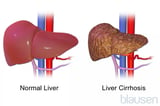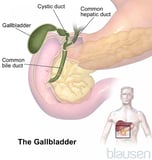What Is Considered a High Level of Bilirubin in Adults
In jaundice, the skin and whites of the eyes look yellow. Jaundice occurs when there is too much bilirubin (a yellow pigment) in the blood—a condition called hyperbilirubinemia.
Bilirubin is formed when hemoglobin (the part of red blood cells that carries oxygen) is broken down as part of the normal process of recycling old or damaged red blood cells. Bilirubin is carried in the bloodstream to the liver, where it binds with bile (the digestive juice produced by the liver). Bilirubin is then moved through the bile ducts into the digestive tract, so that it can be eliminated from the body. Most bilirubin is eliminated in stool, but a small amount is eliminated in urine. If bilirubin cannot be moved through the liver and bile ducts quickly enough, it builds up in the blood and is deposited in the skin. The result is jaundice.
Many people with jaundice also have dark urine and light-colored stool. These changes occur when a blockage or other problem prevents bilirubin from being eliminated in stool, causing more bilirubin to be eliminated in urine.
Also, many disorders that cause jaundice, particularly severe liver disease, cause other symptoms or serious problems. In people with liver disease, these symptoms may include nausea, vomiting and abdominal pain, and small spiderlike blood vessels that are visible in the skin (spider angiomas). Men may have enlarged breasts, shrunken testes, and pubic hair that grows as it does in women.
Serious problems caused by liver disease can include
If people eat large amounts of food rich in beta-carotene (such as carrots, squash, and some melons), their skin may look slightly yellow, but their eyes do not turn yellow. This condition is not jaundice and is unrelated to liver disease.
Jaundice in adults has many causes. Most causes involve disorders and drugs that
-
Damage the liver
-
Interfere with the flow of bile
-
Trigger the destruction of red blood cells (hemolysis), thus producing more bilirubin than the liver can handle
View of the Liver and Gallbladder
The most common causes of jaundice are
Less common causes of jaundice include hereditary disorders that interfere with how the body processes bilirubin. They include Gilbert syndrome and other, less common disorders such as Dubin-Johnson syndrome. In Gilbert syndrome, bilirubin levels are slightly increased but usually not enough to cause jaundice. This disorder is most often detected during routine screening tests in young adults. It causes no other symptoms and no problems.
In people with jaundice, the following symptoms are cause for concern:
-
Severe abdominal pain and tenderness
-
Changes in mental function, such as drowsiness, agitation, or confusion
-
Blood in stool or tarry black stool
-
Blood in vomit
-
Fever
-
A tendency to bruise or to bleed easily, sometimes resulting in a reddish purple rash of tiny dots or larger splotches (which indicate bleeding in the skin)
If people have any warning signs, they should see a doctor as soon as possible. People with no warning signs should see a doctor within a few days.
Doctors ask when the jaundice started and how long it has been present. They also ask when urine started to look dark (which usually occurs before jaundice develops). People are asked about other symptoms, such as itching, fatigue, changes in stool, and abdominal pain. Doctors are particularly interested in symptoms that suggest a serious cause. For example, sudden loss of appetite, nausea, vomiting, pain in the abdomen, and fever suggest hepatitis, particularly in young people and people with risk factors for hepatitis. Fever and severe, constant pain in the upper right part of the abdomen suggest acute cholangitis (infection of the bile ducts), usually in people with a blockage in a bile duct. Acute cholangitis is considered a medical emergency.
Doctors ask people whether they have had liver disorders, whether they have had surgery that involved the bile ducts, and whether they take any drugs that can cause jaundice (for example, the prescription drugs amoxicillin/clavulanate, chlorpromazine, azathioprine, and oral contraceptives; alcohol; over-the-counter drugs; medicinal herbs; and other herbal products such as teas). Knowing whether family members have also had jaundice or other liver disorders can help doctors identify hereditary liver disorders.
-
Working at a day care center
-
Living in or working at an institution with long-term residents, such as a mental health care facility, prison, or long-term care facility
-
Living in or traveling to an area where hepatitis is widespread
-
Participating in anal sex
-
Eating raw shellfish
-
Injecting illegal or recreational drugs
-
Having hemodialysis
-
Sharing razor blades or toothbrushes
-
Getting a tattoo or body piercing
-
Working in a health care facility without being vaccinated against hepatitis
-
Having had a blood transfusion before 1992
-
Having sex with someone who has hepatitis
-
Having been born between 1945 and 1965
During the physical examination, doctors look for signs of serious disorders (such as fever, very low blood pressure, and a rapid heart rate) and for signs that liver function is greatly impaired (such as easy bruising, a rash of tiny dots or splotches, or changes in mental function). They gently press on the abdomen to check for lumps, tenderness, swelling, and other abnormalities, such as an enlarged liver or spleen.
![]()
Tests include the following:
-
Blood tests to evaluate how well the liver is functioning and whether it is damaged (liver tests)
-
Usually imaging tests such as ultrasonography Ultrasonography Imaging tests of the liver, gallbladder, and biliary tract include ultrasonography, radionuclide scanning, computed tomography (CT), magnetic resonance imaging (MRI), endoscopic retrograde cholangiopancreatography... read more , computed tomography Computed Tomography Imaging tests of the liver, gallbladder, and biliary tract include ultrasonography, radionuclide scanning, computed tomography (CT), magnetic resonance imaging (MRI), endoscopic retrograde cholangiopancreatography... read more (CT), or magnetic resonance imaging Magnetic Resonance Imaging Imaging tests of the liver, gallbladder, and biliary tract include ultrasonography, radionuclide scanning, computed tomography (CT), magnetic resonance imaging (MRI), endoscopic retrograde cholangiopancreatography... read more (MRI)
Other blood tests are done based on the disorder doctors suspect and the results of the examination and the initial tests. They may include
-
Tests to assess the blood's ability to clot (prothrombin time and partial thromboplastin time)
-
Tests to check for hepatitis viruses or abnormal antibodies (due to autoimmune disorders)
-
A complete blood count
-
Blood cultures to check for infection of the bloodstream
-
Examination of a blood sample under a microscope to check for excessive destruction of red blood cells
If imaging is needed, ultrasonography of the abdomen is often done first. It can usually detect blockages in the bile ducts. Alternatively, computed tomography (CT) or magnetic resonance imaging (MRI) may be done.
If ultrasonography shows a blockage in a bile duct, other tests may be needed to determine the cause. Typically, magnetic resonance cholangiopancreatography (MRCP Magnetic Resonance Imaging Imaging tests of the liver, gallbladder, and biliary tract include ultrasonography, radionuclide scanning, computed tomography (CT), magnetic resonance imaging (MRI), endoscopic retrograde cholangiopancreatography... read more ) or endoscopic retrograde cholangiopancreatography (ERCP Endoscopic Retrograde Cholangiopancreatography Imaging tests of the liver, gallbladder, and biliary tract include ultrasonography, radionuclide scanning, computed tomography (CT), magnetic resonance imaging (MRI), endoscopic retrograde cholangiopancreatography... read more ) is used. MRCP is MRI of the bile and pancreatic ducts, done with specialized techniques that make the fluid in the ducts appear bright and the surrounding tissues appear dark. Thus, MRCP provides better images of the ducts than conventional MRI. For ERCP, a flexible viewing tube (endoscope) is inserted through the mouth and into the small intestine, and a radiopaque contrast agent is injected through the tube into the bile and pancreatic ducts. Then x-rays are taken. When available, MRCP is usually preferred because it is just as accurate and is safer. But ERCP may be used because it enables doctors to take a biopsy sample, remove a gallstone, or do other procedures.
-
Treatment of cause
-
For itching, cholestyramine
Usually, itching gradually disappears as the liver's condition improves. If itching is bothersome, taking cholestyramine by mouth may help. However, cholestyramine is ineffective when a bile duct is completely blocked.
In older people, jaundice usually results from a blockage in the bile ducts, and the blockage is more likely to be cancer. Doctors suspect that the blockage is cancer when older people have lost weight, have only mild itching, have no abdominal pain, and have a lump in the abdomen.
Jaundice is a yellow color of the skin and eyes caused by having too much bilirubin in the blood.
Jaundice is caused by excess bilirubin, which is formed when hemoglobin (the part of red blood cells that carries oxygen) is broken down as part of the normal process of recycling old or damaged red blood cells. Normally, the bilirubin is processed by the liver and excreted into the digestive tract. Bilirubin can build up in the blood and cause jaundice in the presence of certain kinds of liver damage (particularly from drinking too much alcohol Alcohol-Related Liver Disease Alcohol-related liver disease is liver damage caused by drinking too much alcohol for a long time. In general, the amount of alcohol consumed (how much, how often, and for how long) determines... read more  or from viral hepatitis Overview of Acute Viral Hepatitis Acute viral hepatitis is inflammation of the liver caused by infection with one of the five hepatitis viruses. In most people, the inflammation begins suddenly and lasts only a few weeks. Symptoms... read more ), blocked bile ducts Overview of Gallbladder and Bile Duct Disorders The liver produces bile, a greenish yellow, thick, sticky fluid. Bile aids digestion by making cholesterol, fats, and fat-soluble vitamins easier to absorb from the intestine. Bile also helps... read more
or from viral hepatitis Overview of Acute Viral Hepatitis Acute viral hepatitis is inflammation of the liver caused by infection with one of the five hepatitis viruses. In most people, the inflammation begins suddenly and lasts only a few weeks. Symptoms... read more ), blocked bile ducts Overview of Gallbladder and Bile Duct Disorders The liver produces bile, a greenish yellow, thick, sticky fluid. Bile aids digestion by making cholesterol, fats, and fat-soluble vitamins easier to absorb from the intestine. Bile also helps... read more  , or something that causes the red blood cells to break down faster than normal (hemolysis).
, or something that causes the red blood cells to break down faster than normal (hemolysis).
Doctors have to treat whatever is causing the jaundice. There is no specific treatment to make jaundice go away.
In addition to treating the cause of the jaundice, doctors may give a drug, cholestyramine, to help the itching caused by jaundice.
Many drugs can cause jaundice in adults, including acetaminophen, amiodarone, isoniazid, nonsteroidal anti-inflammatory drugs (NSAIDs), anabolic steroids, and a number of antibiotics.
Jaundice causes the skin and the whites of the eyes to turn yellow. The higher the bilirubin level, the yellower the skin. Severe jaundice usually also causes itching.
In good light, jaundice may be faintly visible in people whose bilirubin levels are between 2 and 3 mg/dL (34 to 51 micromol/L). A bilirubin level of 20 mg/dL (342 micromol/L) can make the skin bright yellow, like a lemon.
-
If damage to the liver is severe, jaundice may be accompanied by serious problems, such as deterioration of brain function and a tendency to bleed or bruise.
-
Acute viral hepatitis is a common cause of jaundice, particularly in young and otherwise healthy people.
-
People should see a doctor promptly if they have jaundice so that the doctor can check for serious causes.
-
Cholestyramine may help relieve itching.
What Is Considered a High Level of Bilirubin in Adults
Source: https://www.msdmanuals.com/home/liver-and-gallbladder-disorders/manifestations-of-liver-disease/jaundice-in-adults
0 Response to "What Is Considered a High Level of Bilirubin in Adults"
Post a Comment